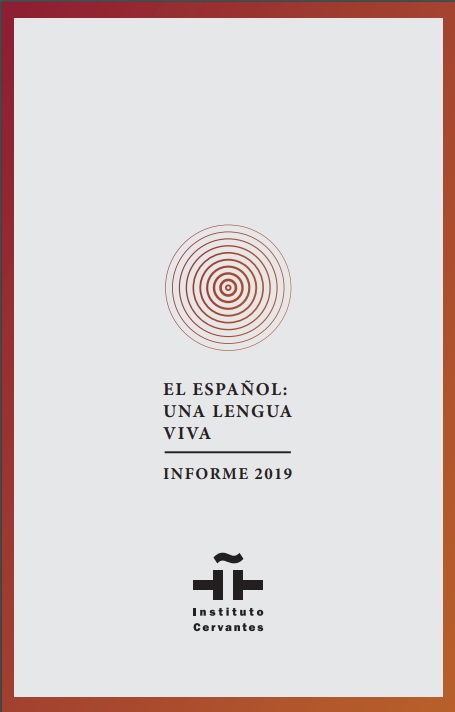Spanish, a language spoken by 580 million people, and 483 million of them native

A total of 580 million people speak Spanish in the world, 7.6% of the world’s population. Of these, 483 million – three million more than a year ago – are native Spanish speakers, which makes Spanish the world’s second mother tongue by number of speakers. In addition, studies have shown that these 22 million people span across 110 countries. Spanish is the third most used language on the internet, where it has great growth potential.
Which is unfortunate, montreal online casino bids 100 Bonus Spins for the game Book of Dead from Playn GO are included in this welcome offer!
These are some of the most relevant data collected by the “Yearbook of Spanish in the world 2019”, done by Instituto Cervantes, presented by its director, Luis García Montero, accompanied by people who were in charge for its content, in an event open to the public.
David Fernández Vítores, author of the study, believes that Brexit will be positive for Spanish in the European Union because it will increase the proportion of Spanish speakers. His 90-page study offers an updated and very reliable census of Spanish speakers and contains «very positive and innovative data», such as the importance given to Spanish in the Linkedin network, a space that is analyzed here for the first time .
The first section of the book introduces the updated data on the Spanish language in areas such as demography, teaching and learning, Internet and social networks, science and culture, its international influence and economic value, as well as its diplomatic presence.
Demography:
Almost 483 million people have Spanish as their mother tongue. (The 2018 Yearbook estimated native speakers at 480 million).
The number of potential Spanish users exceeds 580 million. This figure brings together the groups of native domain, limited competence and foreign language students. Last year it was 577 million.
Spanish is the second mother tongue in the world by number of speakers, only behind Mandarin Chinese.
It is the third language in the global computation of speakers (native domain + limited proficiency + Spanish students) after English and Chinese.
7.6% of the world’s population is today Spanish-speaking. The percentage is expected to increase one tenth (7.7%) in 2050.
In 2100, this percentage is expected to fall to 6.6%, mainly due to the decline in inhabitants of Latin America in the face of the population explosion in several African countries, among other factors.
For demographic reasons, the percentage of the world’s population that speaks Spanish as a native language is increasing, while the proportion of Chinese, English and French speakers decreases.
In 2060, The United States is anticipated to be the second Spanish-speaking country in the world after Mexico: almost one in three Americans will be Hispanic.
Study of Spanish as a foreign language:
A total of 21,882,448 students study Spanish as a foreign language (67,000 more than last year), according to data recorded in 110 countries and at all levels of education.
The Cervantes Institute estimates that the real demand is 25% higher, since the data does not also reflect private education.
In the US, Spanish is the most studied language at all levels of education.
In the United Kingdom, Spanish is perceived as the most important language for the future.
In the European Union, France, Italy, United Kingdom and Germany (in this order) are the countries with the highest number of Spanish students.
The teaching of Spanish in English-speaking countries such as Canada (with 90,000 students), Ireland (47,000), Australia (34,000) and New Zealand (36,000) has also grown significantly.
Economy:
The contribution of all Spanish-speaking countries to global GDP (Gross Domestic Product) is 6.9%. A higher percentage than that generated by countries that have French as their official language.
In the case of Spanish, the common language multiplies by four bilateral exports among Spanish-speaking countries.
Spanish would be the fourth most powerful language in the world, slightly behind French and Chinese, and a great distance from English.
Spanish occupies the third position in the UN (United Nations Organization) and fourth in the scope of the European Union.
Spanish on the Internet:
It is the third most used language on the Internet after English and Chinese.
8.1% of internet communication occurs in Spanish.
It is the second most used language on Wikipedia, Facebook, Twitter and Linkedin. Of the 580 users of the Linkedin social network, 55 million use Spanish to a greater or lesser extent. Most of them (43 million), in Central and South America.
Spanish has a high potential for growth on the Internet due to the average internet availability in Spanish-speaking countries (which is 65.8%, still far from penetration in Spain, which exceeds 92%).
Mexico is among the ten countries with the highest number of users on the Internet.
Spanish in science and culture:
After English, Spanish is the second language in which most scientific documents are published.
Although the participation of Spanish-speaking countries in world scientific production has grown since 1996, Spanish scientific and technical research is relegated to a secondary level in the international arena.
Publishing Market:
Spain is the third largest exporter of books in the world, after the United Kingdom and the United States.
Two Spanish-speaking countries – Spain and Argentina – are among the top 15 book producers in the world, according to the International Publishers Association.
Spain occupies the eighth place in book production, and the ninth in the market value of the publishing sector.
Although the publication of books in electronic format is increasingly widespread, its market share is still low in Spanish-speaking countries.
READ THE FULL REPORT: «Yearbook of Spanish in the world 2019»


